Sony FE 70-200 mm f/4 Macro G OSS II
4. Image resolution
Let's check how the Sony FE 70-200 mm f/4 GM OSS II compares – its result in the frame centre at 70, 135, and 200 mm focal lengths presents a graph below.
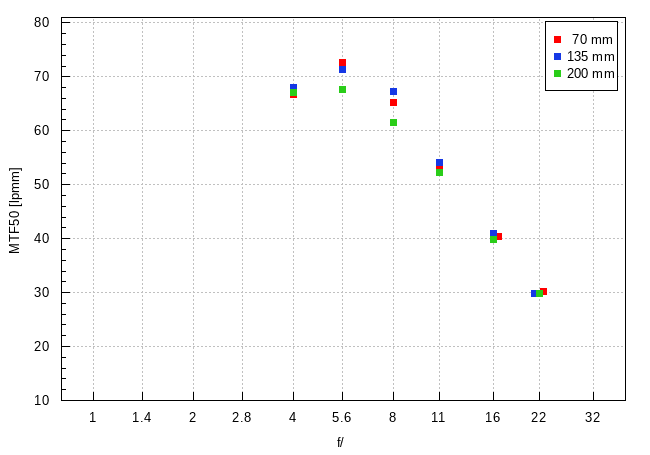
At the maximum relative aperture all focal lengths show a very even and very high resolution level, getting near 67-68 lpmm. On stopping down the aperture you can notice that the maximum focal length lags behind a bit - by f/5.6 it doesn't exceed 70 lpmm as the only one. Still the results remain splendid, especially if you take into account the fact that you deal here with an f/4.0 zoom lens; it would be difficult to expect such a lens to approach, let alone break, any resolution records.
Please Support UsIf you enjoy our reviews and articles, and you want us to continue our work please, support our website by donating through PayPal. The funds are going to be used for paying our editorial team, renting servers, and equipping our testing studio; only that way we will be able to continue providing you interesting content for free. |
- - - - - - - - - - - - - - - - - - - - - - - - - - - - - - - - - - - - - - - - - - - - - - - -
If you can be tempted by a comparison between the tested lens and the faster Sony FE 70-200 mm f/2.8 GM OSS II we would like to inform you that the latter is better at all focal range. At the 70 mm focal length its advantage is about 3 lpmm, at 135 mm it jumps to 9 lpmm and at 200 mm it is over 11 lpmm. The more expensive, faster model, qualified as a G Master device, performs noticeably better but it shouldn't surprise you and it doesn't mean that the slower model fares weakly.
Now let's check how the Sony FE 70-200 mm f/4 G OSS II deals with the edge of the smaller APS-C sensor – an appropriate graph you can find below.
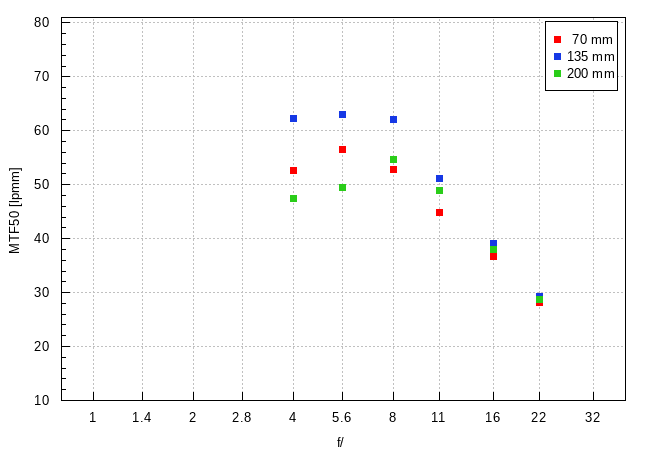
Here differences between particular focal lengths are already very clear. The middle of the range is the best, as the lens can offer you very good resolution level of over 62 lpmm. On the second place is the shortest focal length, also performing beyond reproach and providing results that exceed 52 lpmm already by f/4.0. The maximum focal length fares the weakest but even there, at the maximum relative aperture, images are completely useful, with results brushing against 47-48 lpmm.
Now let's check what will happen if you progress to the edge of full frame.
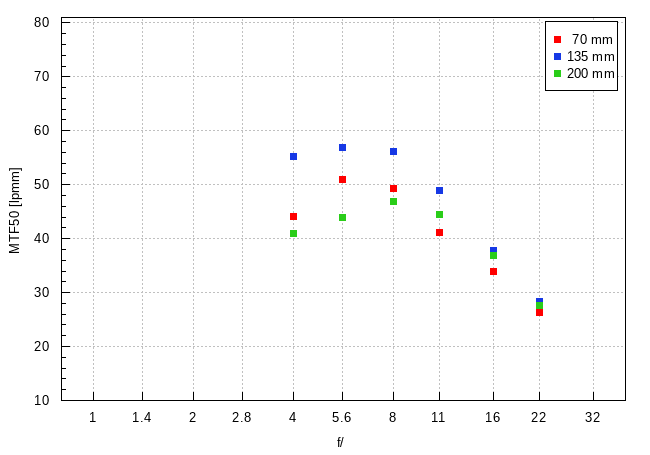
Neither differences between particular focal lengths nor their order changed significantly: once again the best performance you can find in the middle of the range and there, up from the maximum relative aperture, you deal with good values, exceeding significantly 50 lpmm. The 70 mm focal range also can exceed 50 lpmm but only near f/5.6. At the maximum relative aperture we get a very secure level over 44 lpmm so you get no reasons to complain.
Once again the maximum focal length is the weakest – at the maximum relative aperture you see a result of 41 lpmm, more or less decent. On stopping down it slightly improves but the maximum values are just about 46-47 lpmm. It's true you can't call it a reall slip-up but it doesn't impress us either.
The summary of this chapter can be positive only. The tested lens provides very good image quality in the frame centre and it would be foolish to expect a lot more from this kind of optical instrument. Additionally, on edges of both types of detectors it offers fully acceptable resolution levels, without any obvious slip-ups.
At the end of this chapter traditionally we present crops taken from photos of our resolution testing chart which were saved as JPEG files along the RAW files, used for the analysis above.
| Sony A7R III, JPEG, 70 mm, f/5.6 |
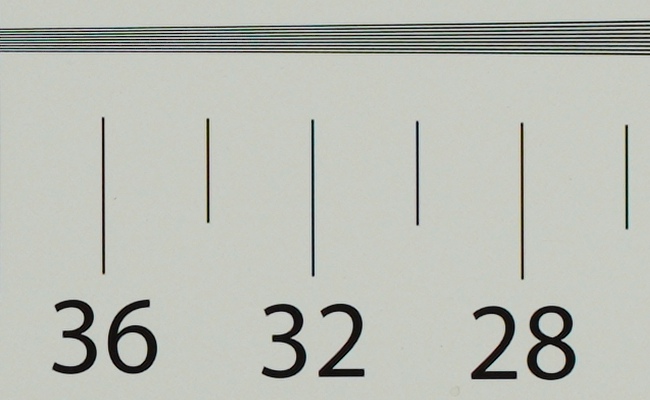 |
| Sony A7R III, JPEG, 200 mm, f/4.0 |
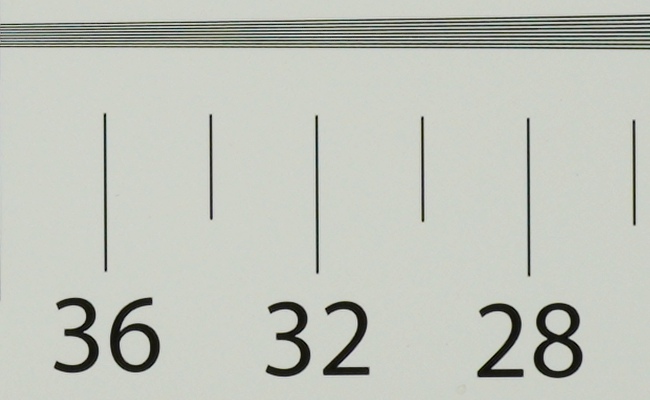 |






